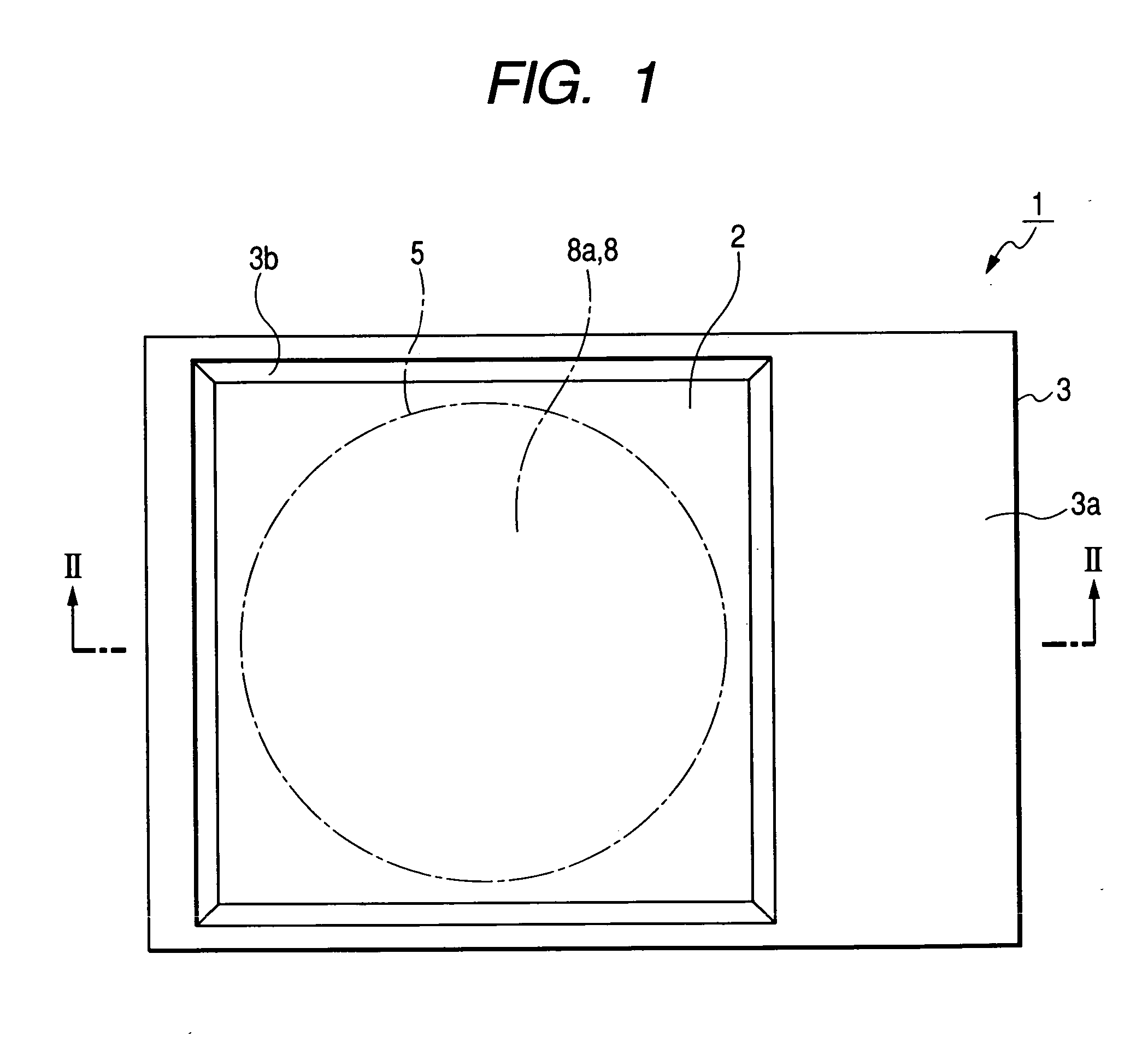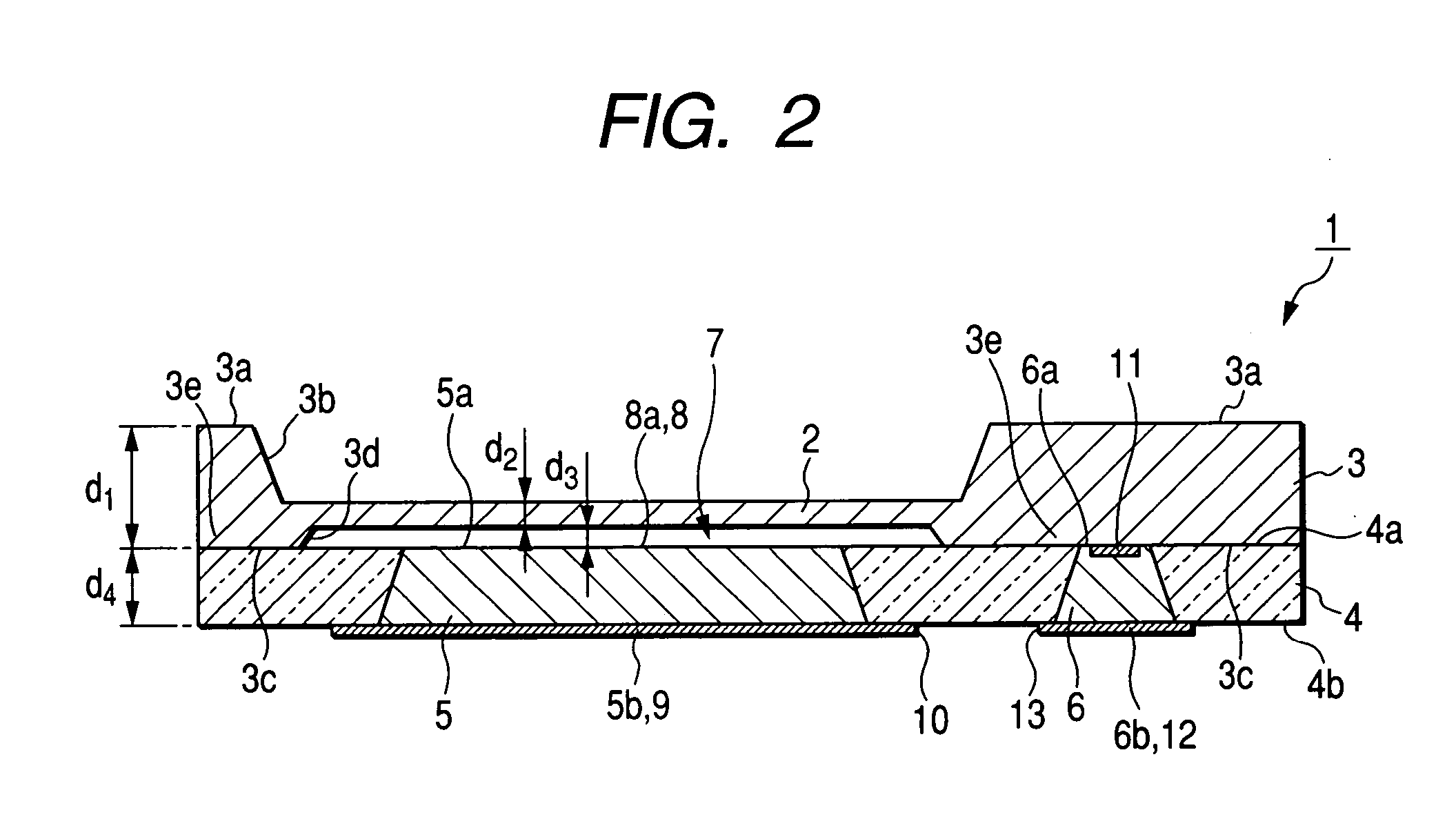Capacitive pressure sensor
- Summary
- Abstract
- Description
- Claims
- Application Information
AI Technical Summary
Benefits of technology
Problems solved by technology
Method used
Image
Examples
Embodiment Construction
[0028] Hereinafter, the preferred embodiments of the invention will be described with reference to the accompanying drawings. FIG. 1 is a plan view illustrating an example of a capacitive pressure sensor according to the present embodiment, and FIG. 2 is a cross-sectional view taken along the line II-II of FIG. 1. FIGS. 3A to 3C and 4A to 4C are process views explaining a method of manufacturing a capacitive pressure sensor. FIGS. 5A to 5C are cross-sectional views explaining another example of the capacitive pressure sensor according to the present embodiment and a method of manufacturing the same. FIG. 6 is a cross-sectional view illustrating another example of the capacitive pressure sensor according to the present embodiment.
[0029] Further, FIGS. 1 to 6 are views explaining the configuration of the capacitive pressure sensor according to the present embodiment and the method of manufacturing the same, the measuring range of the capacitive pressure sensor being 0 to several hund...
PUM
 Login to View More
Login to View More Abstract
Description
Claims
Application Information
 Login to View More
Login to View More - R&D
- Intellectual Property
- Life Sciences
- Materials
- Tech Scout
- Unparalleled Data Quality
- Higher Quality Content
- 60% Fewer Hallucinations
Browse by: Latest US Patents, China's latest patents, Technical Efficacy Thesaurus, Application Domain, Technology Topic, Popular Technical Reports.
© 2025 PatSnap. All rights reserved.Legal|Privacy policy|Modern Slavery Act Transparency Statement|Sitemap|About US| Contact US: help@patsnap.com



